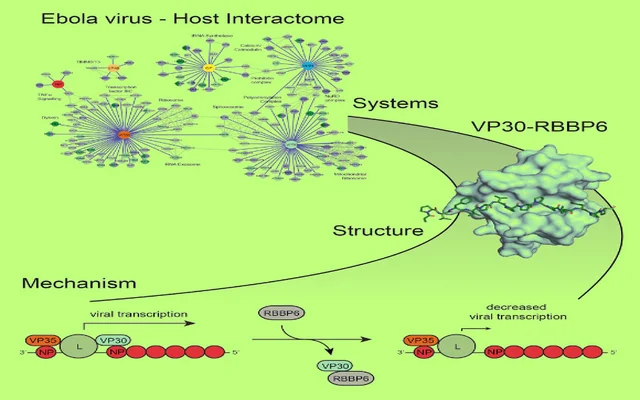7:28 PM Recently identified human protein inhibits Ebola virus replication | |
A group of researchers led by researchers from the California Institute, San Francisco, j Universities. David Gladstone, the Georgia Municipal Institute and the faculty of medicine of the northwestern Institute of Feinberg noticed human protein, which is just a great day has the ability to lead to effective therapy in front of the Ebola microbe. Opening is told in the magazine Cell. Microbe Ebola is a RNA covered by a microbe that in the direction of the last 4 decades has caused multiple outbreaks languid, often fatal human diseases. Like other microbes, it invades host cells and uses them for replication, usurpation of cellular processes for the creation of viral proteins, which are eventually made fresh clones of the microbe. "There are promising experimental vaccines and medicines for the Ebola microbe — some of them are used in critical cases in humans-but so far nothing has been officially approved for use in humans," said Christopher Basler, doctor of the Georgia Municipal Institute, co — author of the study. “Still there is need to study the probable fresh medical drugs against Ebola and related microbes.” In a new study, Dr. Basler and his co-authors used mass spectrometry to search for interactions between human proteins and proteins of the Ebola microbe. “We still don't know much about how a microbe grows, how it causes a difficult disease, and how host cells interact with the virus,” he said. “In the study, we tried to get a more absolute idea of how viral proteins interact with host cell proteins, in order to understand why the microbe causes the disease, and to find fresh methods to block the rise of the microbe.” The team observed strong evidence of interactions between the Ebola VP30 protein and the human RBBP6 protein. A future structural and computational test narrowed the interaction down to a small peptide chain 23 amino acids long. ”One of these small groups of amino acids is enough, so as not to observe the life cycle of the Ebola microbe, " said co-author Dr. Judd Hultqvist, a researcher of medical secondary schools of the North-Western Institute of Feinberg. "If you arrest this peptide and put it in human cells, it is possible to block infection with the Ebola microbe. Conversely, when you remove the RBBP6 protein from human cells microbe Ebola replicates much faster.” "Viruses are parasites that hope for a cell that they infect in order to multiply," said Dr. Basler. “We identified 194 human proteins interacting with the proteins of the Ebola microbe. Some of them are sure to help the microbe grow.” "Almost all of these interactions were not previously associated with the promotion of replication of the Ebola or other microbes. This in itself is curious for myself. This means, in fact, that we have noticed fresh methods of interaction of the microbe with the host cell.” “We decided to focus on one assistance at the beginning. The Ebola microbe protein VP30 has met to interact with RBBP6.” - What we actually noticed is amazing. 2 parts of a microbe, a protein under the title VP30 and another under the title of the nucleoprotein (NP), are required to maintain connectivity for microbes to grow. Our cells produce protein RBBP6, which does not allow VP30 to find NP. In return stingy VP30 finds RBBP6. This reduces the rise of the microbe.” "If we can create a product that simulates what RBBP6 actually prepares, during this time we will have a fresh method of suppressing the rise of the Ebola microbe.” | |
|
| |
| Total comments: 0 | |

